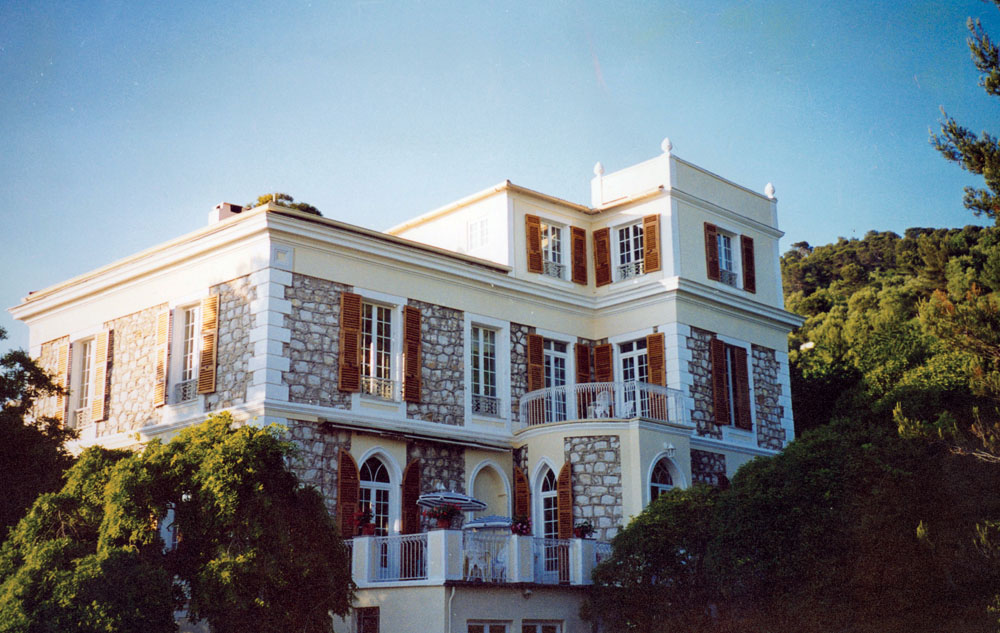Henri Chrétien on:
[Wikipedia]
[Google]
[Amazon]
Henri Jacques Chrétien (1 February 1879,  Born in
Born in
- the anamorphic widescreen process, using an anamorphic lens system called Hypergonar, that resulted in the
- the co-invention, with George Willis Ritchey, of the
* In 1901, Chrétien, Joseph Joachim Landerer and Thomas David Anderson jointly received the
ADS NASALibrary of CongressLibrary of Congress
Paris
Paris () is the capital and most populous city of France, with an estimated population of 2,165,423 residents in 2019 in an area of more than 105 km² (41 sq mi), making it the 30th most densely populated city in the world in 2020. Si ...
– 6 February 1956, Washington, D.C.) was a French astronomer
An astronomer is a scientist in the field of astronomy who focuses their studies on a specific question or field outside the scope of Earth. They observe astronomical objects such as stars, planets, moons, comets and galaxies – in either ...
and an inventor.
 Born in
Born in Paris
Paris () is the capital and most populous city of France, with an estimated population of 2,165,423 residents in 2019 in an area of more than 105 km² (41 sq mi), making it the 30th most densely populated city in the world in 2020. Si ...
, France
France (), officially the French Republic ( ), is a country primarily located in Western Europe. It also comprises of Overseas France, overseas regions and territories in the Americas and the Atlantic Ocean, Atlantic, Pacific Ocean, Pac ...
, his most famous inventions are:- the anamorphic widescreen process, using an anamorphic lens system called Hypergonar, that resulted in the
CinemaScope
CinemaScope is an anamorphic lens series used, from 1953 to 1967, and less often later, for shooting widescreen films that, crucially, could be screened in theatres using existing equipment, albeit with a lens adapter. Its creation in 1953 by ...
widescreen technique, and - the co-invention, with George Willis Ritchey, of the
Ritchey–Chrétien telescope
A Ritchey–Chrétien telescope (RCT or simply RC) is a specialized variant of the Cassegrain telescope that has a hyperbolic primary mirror and a hyperbolic secondary mirror designed to eliminate off-axis optical errors (coma). The RCT has a ...
, an improved type of astronomical telescope
A telescope is a device used to observe distant objects by their emission, absorption, or reflection of electromagnetic radiation. Originally meaning only an optical instrument using lenses, curved mirrors, or a combination of both to obse ...
, employing a system now used in virtually all large research telescopes.
He spent part of his early astronomical career at the Nice Observatory, which was close to his house, the Villa Paradou. The Villa was built by famous French architect Charles Garnier who also built the Opera of Paris. In 1995, the abandoned villa was acquired by the artist Rainer Maria Latzke
Rainer Maria Latzke (born 28 December 1950) is a German artist working in the field of ''trompe-l'œil'' and mural painting. He taught at the Utah State University and is founder of the Institute of Frescography. Latzke is Honorary Professor o ...
, who restored it and added new murals to the existing frescoes.
Chrétien was one of the founders of the ''Institut d'optique théorique et appliquée'' and professor at the French "grande école" SupOptique (École supérieure d'optique
The Institut d'optique Graduate School ("Institute of optics"), nicknamed SupOptique or IOGS, is one of the most prestigious French Grandes Ecoles and the leading French ''grande école'' in the field of Optics and its industrial and scientific ap ...
).
Awards and honors
*The astronomical ''Chrétien International Research Grants'' awards are in honor of himChrétien International Research Grants* In 1901, Chrétien, Joseph Joachim Landerer and Thomas David Anderson jointly received the
Prix Jules Janssen
The Prix Jules Janssen is the highest award of the Société astronomique de France (SAF), the French astronomical society.
This annual prize is given to a professional French astronomer or to an astronomer of another nationality in recognition ...
, the highest award of the Société astronomique de France
The Société astronomique de France (SAF; ), the French astronomical society, is a non-profit association in the public interest organized under French law ( Association loi de 1901). Founded by astronomer Camille Flammarion in 1887, its purpose ...
(French Astronomical Society).
*Valz Prize
The Valz Prize ''(Prix Valz)'' was awarded by the French Academy of Sciences, from 1877 through 1970, to honor advances in astronomy.
History
The Valz Prize was established in June 1874 when the widow of astronomer Benjamin Valz, Marie Madeleine J ...
from the French Academy of Sciences
The French Academy of Sciences (French: ''Académie des sciences'') is a learned society, founded in 1666 by Louis XIV at the suggestion of Jean-Baptiste Colbert, to encourage and protect the spirit of French scientific research. It was at ...
(1931)
*The crater Chrétien on the Moon
The Moon is Earth's only natural satellite. It is the fifth largest satellite in the Solar System and the largest and most massive relative to its parent planet, with a diameter about one-quarter that of Earth (comparable to the width of ...
is named in his honor.
*In 1955, he received an Academy Award
The Academy Awards, better known as the Oscars, are awards for artistic and technical merit for the American and international film industry. The awards are regarded by many as the most prestigious, significant awards in the entertainment ind ...
for his work on the CinemaScope process.
Publications
ADS NASA
References